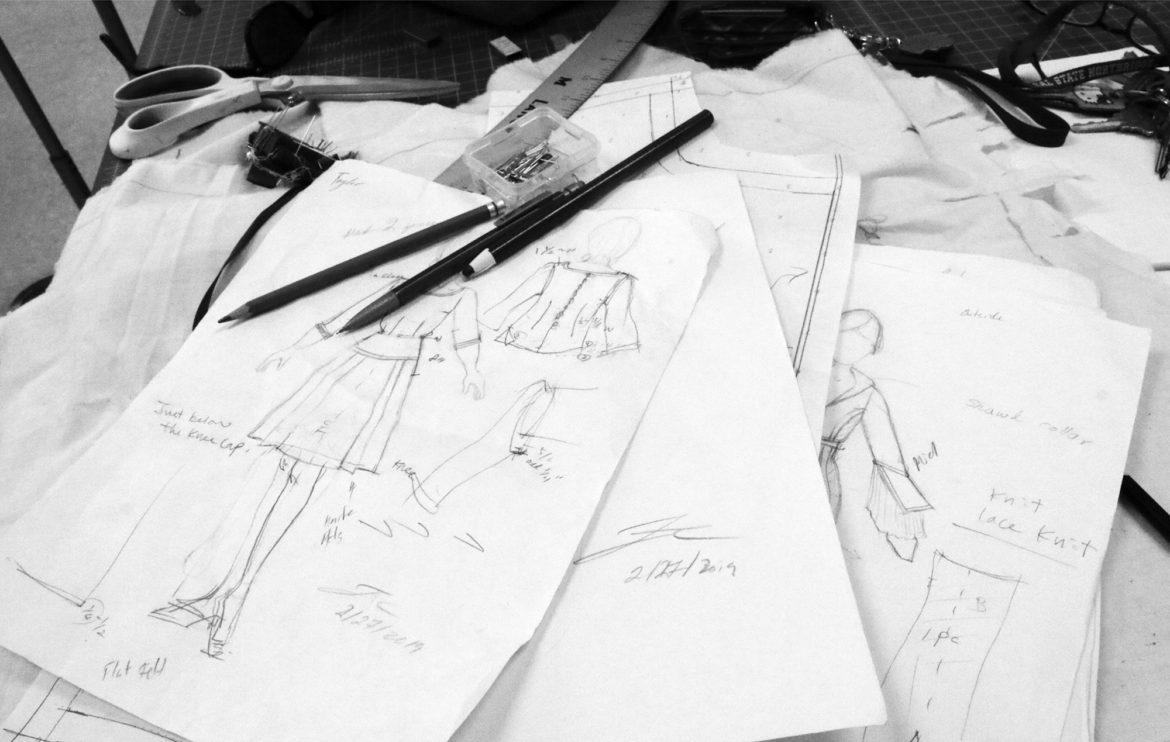With only two weeks to go, the students of the FCS 476 Studio Problems in Apparel Design class are down to the wire in terms of finishing their collections for the TRENDS fashion show, happening on May 4 at 6 p.m.
The class is taught by Dr. Jongeun Kim, the option coordinator and professor of apparel design and merchandising. The option is often overlooked by potential students because it falls under the family and consumer sciences umbrella. Kim is writing a brand new curriculum that is fashion-centric, in hopes of making the option an actual major.
“We have curriculum changes coming up, and I’m writing the curriculum right now. It’s almost done,” Kim said. “We want to focus everything in fashion because now we have a core of 27 units. We have to take family and consumer science classes like nutrition and consumer affairs. These are required for the major, and it’ll help these guys learn about families and consumers, but my new curriculum core will be design, Adobe and all those just for fashion.”
Kim also spoke about how all of the classes she’s making for the new curriculum are original concepts coming from her, such as having the students learn how to draw digitally instead of the traditional pencil and paper method.
The student designers are eager to share the concepts and details behind their collections. Senior Vanessa Diaz, 26, a family and consumer sciences major, is working on a collection called “After Hours.”
“The theme, ‘After Hours,’ is grunge, party girl, warehouse parties,” Diaz said. “The thing is, a lot of people don’t know areas in Los Angeles to party, and a lot of them are pretty low-key. You’d have to know people to get in. You’d need to know a certain word to get access to the after party.”
Diaz shared what the atmosphere in that type of environment is like: “You see fashion that is sort of … out there. We don’t dress just to dance or to show off our bodies. It’s like a fashion show, and not necessarily bodycon, it’s more flashy than anything. If you got chains, you got a pop of flared pants.”
In the past, Diaz has traveled across the globe and through those excursions, the worldly designer has found inspiration.
“I mean I’ve traveled enough. I’ve been to Miami, Paris and Dubai,” said Diaz. “They’re major in those parts. Very rich people and they’re out there to flex the look. They want people to look. Girls at the beach in San Trope will wear heels to the bars near the beach, but they don’t care about the fact that there’s sand inches away from them. And when I was in Paris, I was window shopping and one of my favorite designers, Valentino, and I passed by the window and I saw his couture line in Paris and I almost cried. To be able to see the clothing, it’s art.”
A lot of the student designers, including Diaz, are interested in incorporating sustainability into their practice.
“I feel like I want to be able to contribute to the fashion industry in a very clean way. I’m into sustainable fashion,” Diaz said. “I want to get into the hemp business and see what type of clothing I can make using that fabric. The fabric is really expensive and hard to get a hold of, and textiles of that material aren’t as complex. It’s very simple. Hemp fabric is very plain and rough, but in the future, I’d love to work on something like that.”
Another student designer, Kimberly Gomez, explained that her inspiration came from the famed Disney princesses.
“I’m reimagining the outfits that they have in their movies and finding fabrics and textures that match with it, or themes that match with them, and then creating a whole different design around them,” Gomez said. “My looks are more weekend wear or brunch.”
Fashion as art is a practice that these student designers utilize to tell a story.
“Everybody is really different in our class for sure, and when we have our presentations about all of our prototypes, you really see each person’s vision,” explained Gomez.
As the TRENDS fashion show inches closer and closer to the big day, the designers are preparing to showcase their pieces. However, when those lights shut off and the event comes to a close, an underlying message remains.
“There’s so much being wasted in the industry, and I feel like we should focus on getting higher quality fabric,” Diaz said. “There are a lot of clothes that are being thrown away. I wish people would go to the thrift stores to shop. They can be creative and make something out of nothing. I feel like a lot of us are aware that fast fashion is one of the biggest contributors to polluting the environment, and I hope we make others contribute to the environment. We’re going to be conscious designers, so in turn, our consumers will be conscious as well.”












